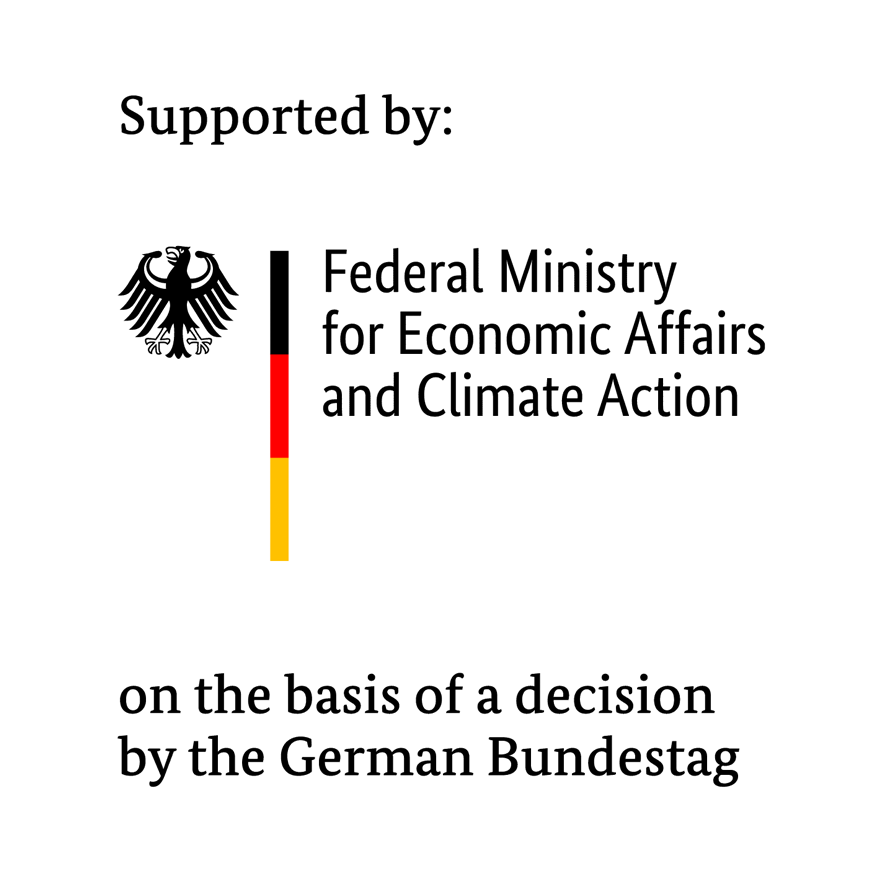Investigation of the load-bearing behavior of submerged offshore grouted joints on support structures with dynamic interactions – Grout-WATCH
| Funding: | Federal Ministry for Economic Affairs and Climate Action (BMWK) |
| Partner: | Fraunhofer-Institut für Windenergiesysteme IWES, Wölfel Engineering GmbH + Co. KG (Antragsteller), WindMW Service GmbH, Leibniz Universität Hannover, Institut für Baustoffe (IfB) Leibniz Universität Hannover, Institut für Stahlbau (IfS), Leibniz Universität Hannover, Institut für Statik und Dynamik (ISD), MIOPAS GmbH |
| Duration: | 03/2020 - 12/2023 |
- Grouted joints are used to connect the foundation and tower structures of offshore wind turbines: the annulus formed between the two tubes is filled with a high-performance grout.
- At present, there are no optimized methods for determining the condition of such connections.
- The Grout-WATCH project’s aim is therefore to develop a measuring system that can be integrated into the grouted joint and make use of characteristics to estimate the remaining service life of grouted joints.
- In the scope of its subproject, the Fraunhofer IWES is responsible for developing a test environment and performing large-scale tests for verification of the measuring system.
The support structures of offshore wind turbines need to be particularly stable as they are subject to high loads. This applies not only for the tower and foundations, but also for what are known as grouted joints. These joints are tube-in-tube connections in which steel cylinders are inserted into each other and the resulting annulus between them is filled with high-performance grout. In the offshore wind industry, they are used to connect the foundation and tower structures of offshore wind turbines.
At present, it is not possible to monitor the condition of grouted joints in offshore wind turbines optimally with the conventional methods in use in the oil and gas industries. The constant changes resulting from the dynamic load of wind, waves, and operation of the plant can only be documented with great difficulty. As such, it is not currently possible to predict the remaining service life until the limit state of the bearing capacity is reached. Although superseded by flange joints in the interim, larger wind turbine sizes mean that the focus is now moving back to grouted joints. As, at the same time, there are plenty of older wind turbines with grouted joints, the topic of grouted joint monitoring is becoming topical again.
This is where the Grout-WATCH project comes into play. The project partners are working on the development of the demonstrator of a measuring system capable of investigating and evaluating the damage process of a grouted joint. This requires a fiber Bragg grating-based (fiber-optic) measuring system, which can be integrated into the grouted joint and allows for continuous monitoring. In addition, a characteristic curve for precise description of the limit state is being developed in a comprehensive testing program. For older wind farms, existing methods are to be further developed using the new limit state characteristic curve.
In its subproject, the Fraunhofer IWES is responsible for the development of a test environment and the performance of large-scale testing for evaluation of the new fiber Bragg grating-based sensor technology and the structural health monitoring (SHM) system based on it. This will involve the use of a large-scale model of a monopile support structure for offshore wind turbines.
